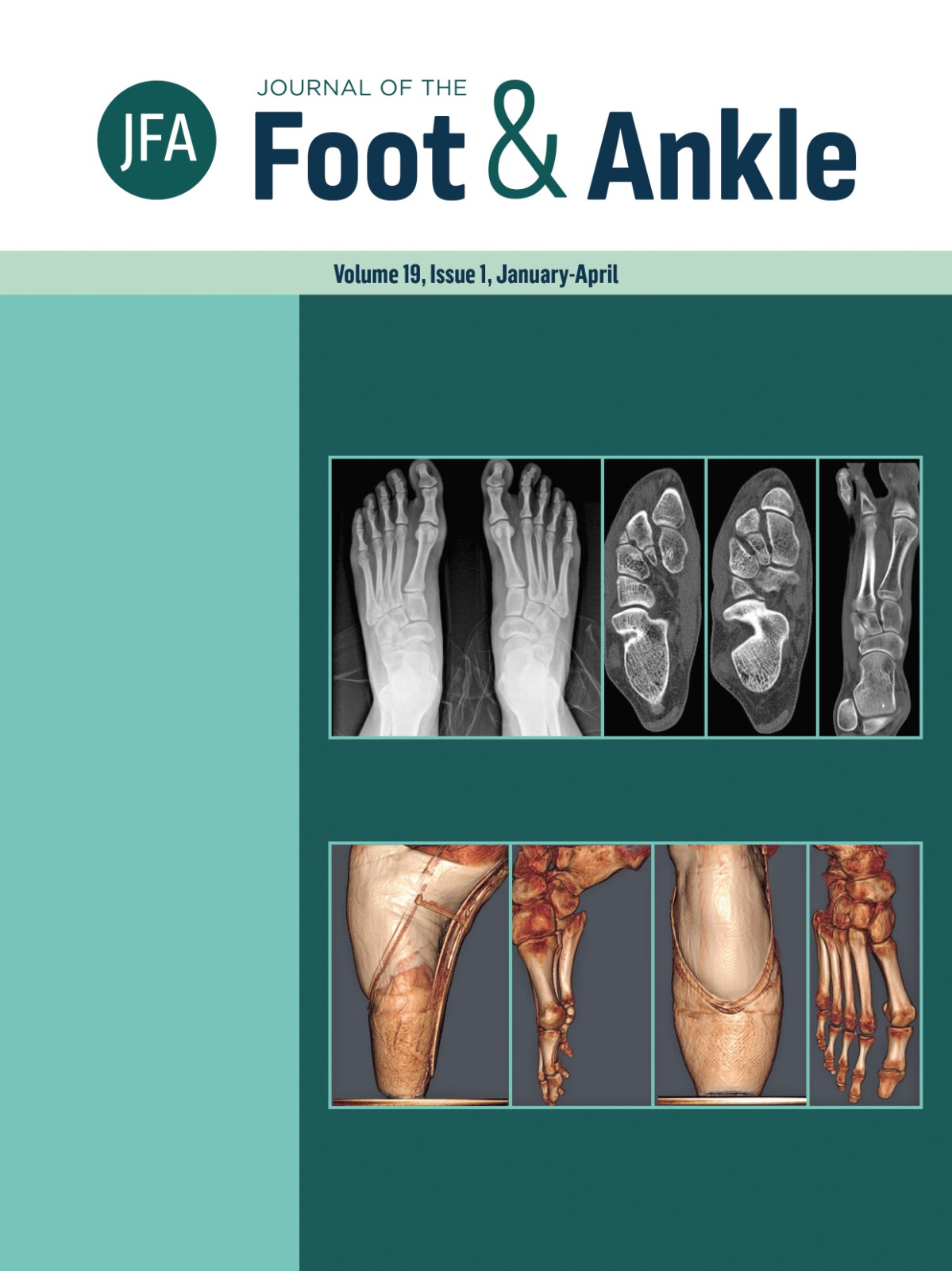Bone spur formation in transtibial amputation in pediatric patients
DOI:
https://doi.org/10.30795/jfootankle.2025.v19.1849Keywords:
Amputation, surgical; Child; Osteophyte.Abstract
Objective: Amputating a limb during childhood is a rare yet significant event often perceived as a catastrophe by families and subsequently by the child. A multidisciplinary team, including wound care, rehabilitation, and prosthesis fitting specialists, plays a crucial role in managing these patients. The objective of this study is to retrospectively evaluate transtibial amputations performed on children aiming to assess the percentage of individuals who developed symptomatic spurs after the initial amputation procedure. Method: This study retrospectively evaluates transtibial amputations performed on children from 1990 to 2021, focusing on the development of symptomatic bone spurs post-surgery. Results: Our findings indicate that out of 27 patients under 12 years of age, 66.66% developed symptomatic spurs requiring revision surgery, with a mean time to identify these spurs being approximately 53 months post-amputation. The primary indications for amputation were congenital issues (51.85%), trauma, and infections. Although bone overgrowth is the most common complication in 66.66% of cases, younger individuals are more likely to experience this issue. Despite the high revision rates, amputation remains critical for long-term functional outcomes. Limitations of the study include a small sample size and retrospective design, yet it highlights the importance of vigilance regarding bone spur formation in pediatric amputees. Conclusion: Bone spurs are a common complication of transtibial amputation in children, regardless of the technique used for the procedure. Understanding the existence of this condition allows physicians to educate families and children about this possibility and prepare them for possible new procedures. Level of evidence IV; Therapeutic studies - investigating the results of treatment.
Downloads
Published
How to Cite
Issue
Section
License
Copyright (c) 2025 Journal of the Foot & Ankle

This work is licensed under a Creative Commons Attribution-NonCommercial 4.0 International License.







